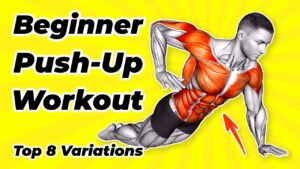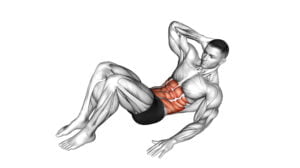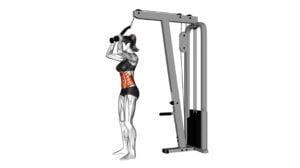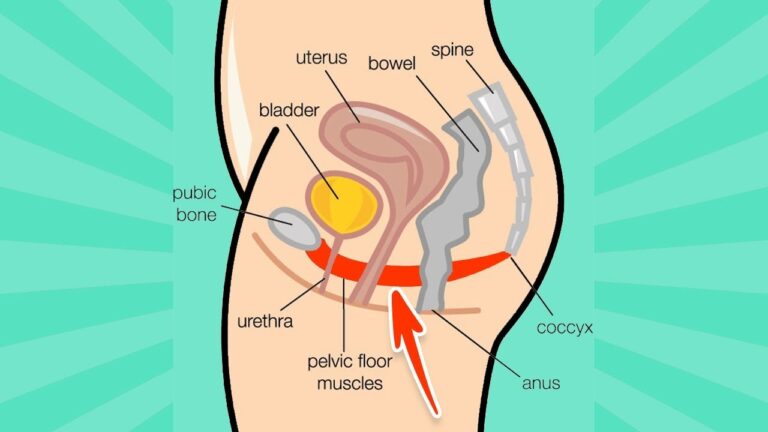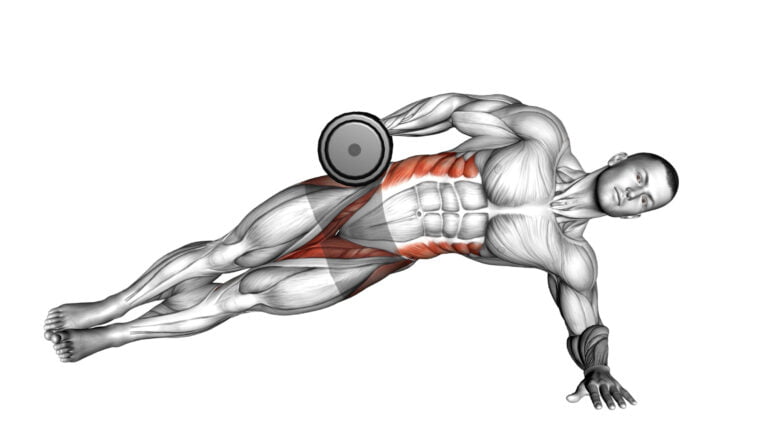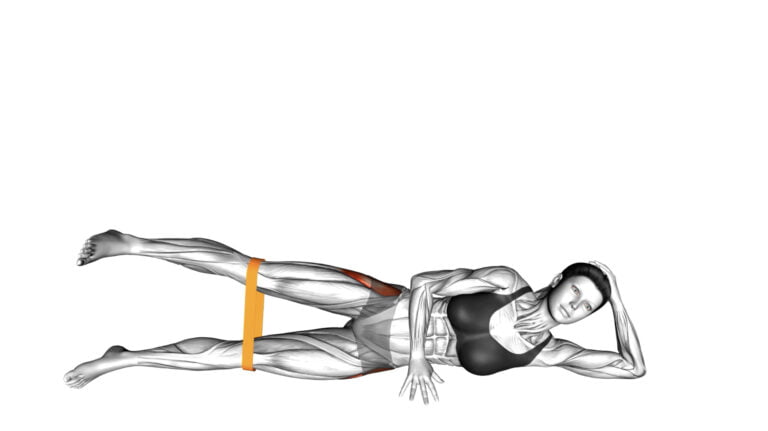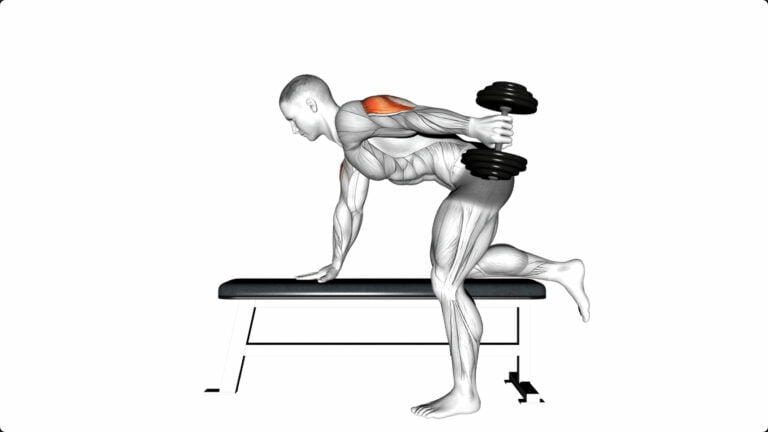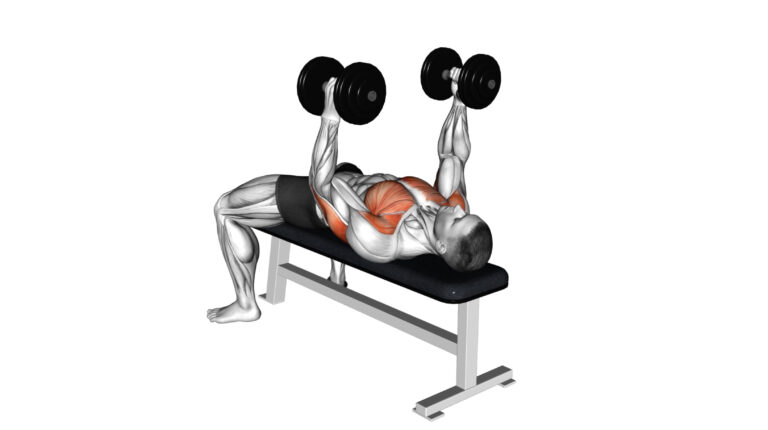Mastering Plank Exercises For Beginners: A Step-by-Step Guide To Strengthen Your Core
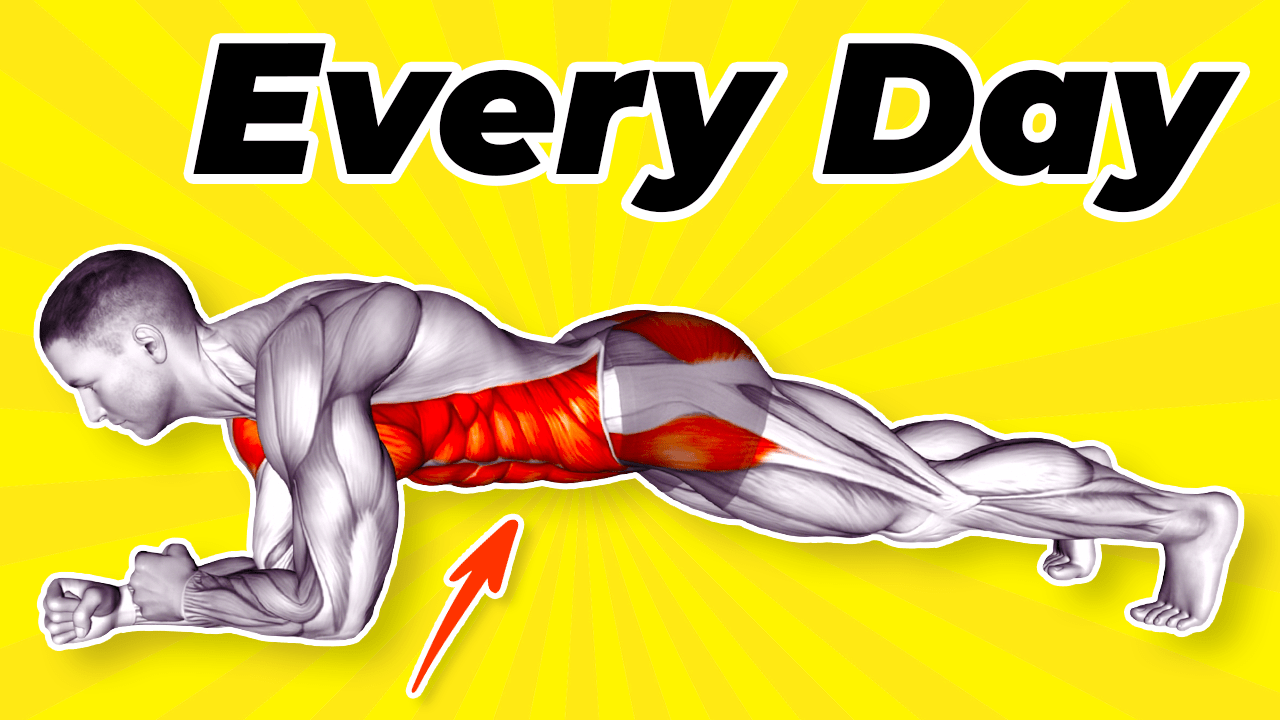
Watch The Video To See This Planking Exercise For Beginners In Action!
Dive into our video showcasing 10 essential plank exercises for beginners, tailored to help you build a solid foundation in your core-strengthening journey. From the classic front plank that engages every inch of your belly muscles to the dynamic mountain climber that boosts heart rate and enhances balance, each movement is broken down with clear visuals.
The easy-to-follow instructions ensure you maintain proper form, protecting your lower back while maximizing the effectiveness of each exercise.
The step-by-step guide not only demonstrates how to execute these planks properly but also integrates variations like the elbow to knee side plank crunch and the front plank with arm and leg lift.
These modifications are perfect for beginners looking to prevent workout monotony and challenge different muscle groups within their core stability routine. Strengthening your transverse abdominis has never been more accessible; press play on this engaging video and start enhancing your health and fitness today!
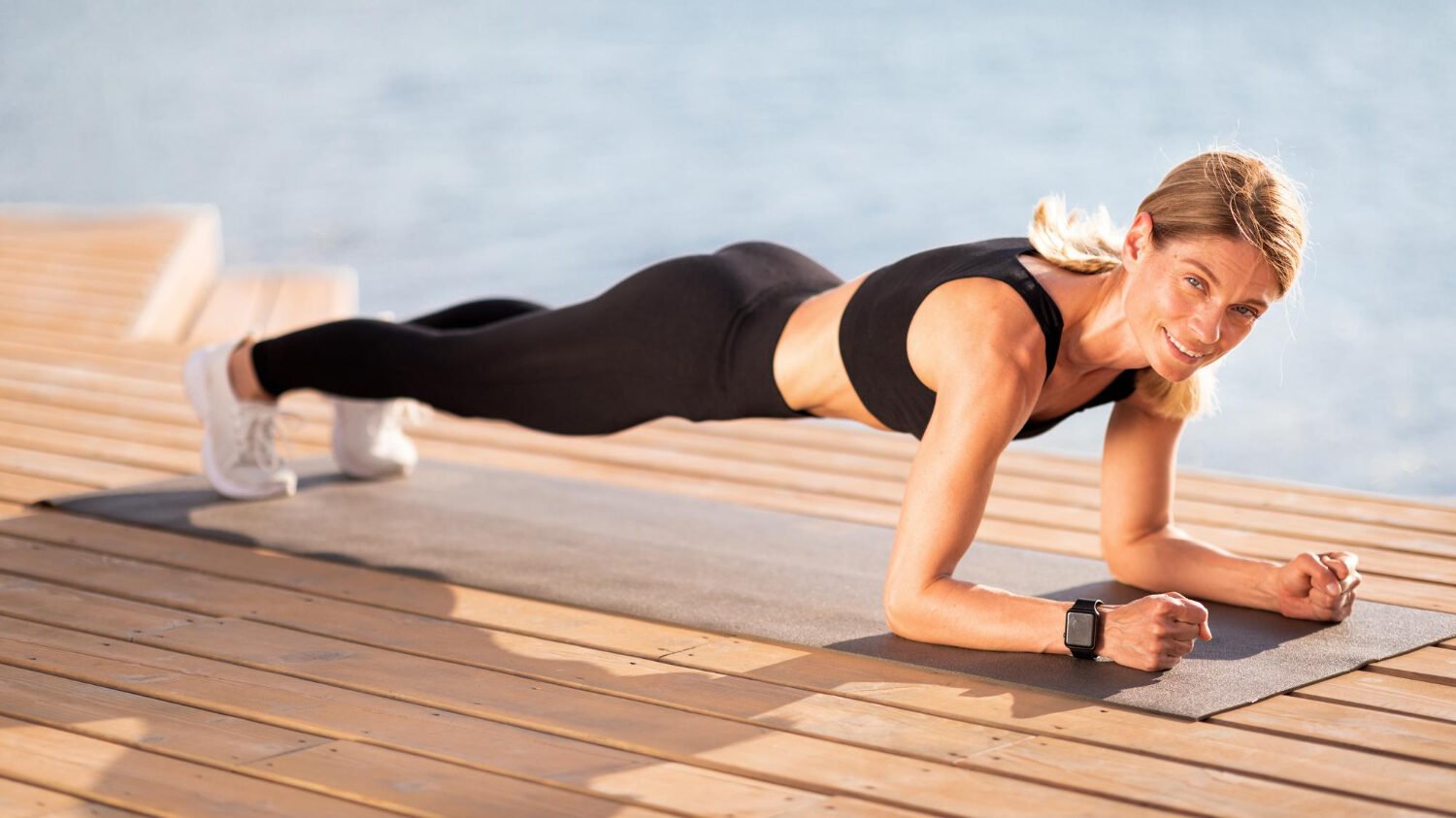
The plank: simple in design, yet mighty in benefits. Often underestimated by fitness novices, this powerhouse move is a fundamental exercise that targets not just your core but sets the groundwork for building overall muscular strength and endurance.
With over ten years of experience as a certified personal trainer, I’ve guided countless clients through their first trembling seconds of planking to minutes-long sessions that forge ironclad cores.
The key isn’t just persistence— it’s starting with the right form and variations suitable for beginners.
Planks are more than just static holds; they’re an investment in your body’s foundational stability essential for advanced exercises down the road. By committing to mastering them from the start, you’re setting yourself up not only for visible abs but also for improved posture and reduced back pain—a claim supported by studies on core-strengthening activities.
Ready to transform? Let’s plant our hands firmly on the ground and begin!
Key Takeaways
- Engaging in plank exercises strengthens not only the core muscles but also secondary stabilizing muscles, improving posture and reducing risk of injury.
- Watching a video like the “10 plank exercises for beginners” can greatly help in understanding proper form and technique to ensure effective practice and prevent strain.
- Beginners should start with basic planks, aiming for 30 – second holds, before moving on to more challenging variations such as the Skater Stepback or Front Plank with Arm and Leg Lift.
- It’s important to maintain a straight back, use proper elbow placement under shoulders, not let hips sink, breathe deeply, and gradually increase hold times for optimal results.
- The variety of beginner – friendly plank variations outlined provides an opportunity to keep workouts fresh while progressively building core stability and overall fitness.
Benefits of Planks for Beginners
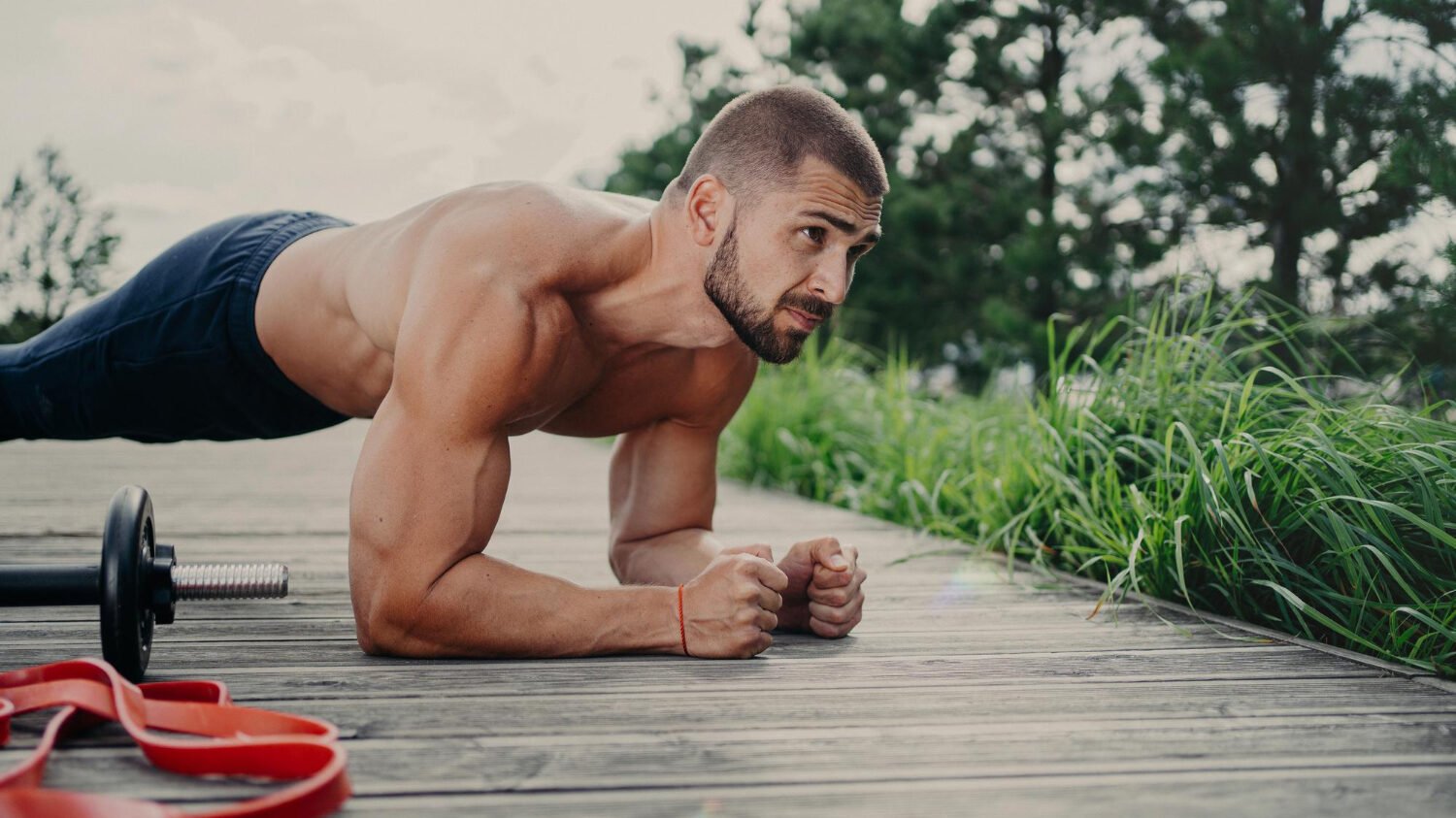
Planks are a great way for beginners to build core strength, strengthen secondary muscles, and promote stability for other workouts. To learn more about the benefits of planks, continue reading below.
Build core strength
Building core strength is essential for more than just achieving a six-pack. A strong core supports your back, helps you maintain good posture, and improves balance. By mastering planks, one of the best plank exercises for beginners, you engage the entire set of core muscles including the rectus abdominis, obliques, and lower back.
This solid foundation aids in performing other workouts with better form and reduces the risk of injuries.
To see these plank variations in action can be incredibly helpful; that’s why watching our video on 10 plank exercises for beginners will guide you through each movement step-by-step.
It shows proper techniques to ensure your shoulders are aligned over elbows and wrists while keeping hips at an even height with your feet flexed – all key points to get the most out of this exercise regimen without straining yourself.
Incorporate these easy plank exercises into your daily routine to keep building those crucial core muscles day by day.
Strengthen secondary muscles
Plank exercises do more than just sculpt your core; they’re also fantastic for reinforcing the supporting muscle groups. By holding a plank position, you activate muscles throughout your body including the shoulders, chest, legs, and especially the glutes.
These secondary muscles are crucial because they work as stabilizers during many daily activities and other workouts.
Incorporating different variations of planks into your exercise routine ensures that these stabilizers get stronger over time. Exercises like Elbow to Knee Side Plank Crunch and Front Plank with Arm and Leg Lift specifically target these important areas.
As you build strength in your secondary muscles, you’ll notice improvements not only in planks but also in push-ups, yoga poses like downward dog, pilates movements, and even weightlifting techniques.
Promote stability for other workouts
To promote stability for other workouts, incorporating plank exercises into your routine can help improve overall balance and coordination. By strengthening the core muscles, planks provide a stable foundation for various physical activities such as weightlifting, running, or yoga.
Building a solid core through plank exercises also contributes to better posture during other workouts and daily activities.
Engaging in regular plank variations not only strengthens the abdominal muscles but also supports the lower back and hips, which are crucial for maintaining stability during different forms of exercise.
These exercises contribute to a stronger overall physique and reduce the risk of injury when engaging in other physical activities. Incorporating planks into your workout regimen will result in improved stability and control across different types of exercise routines.
How to Do a Basic Plank for Beginners

Start in a push-up position, engage your core, and hold for 30 seconds. Want to learn more about mastering plank exercises? Keep reading to discover 10 beginner-friendly plank variations and essential tips for success!
Start in a push-up position
Lower your body into a push-up position, with your hands directly beneath your shoulders and arms extended. Keep your feet hip-width apart and balance on the balls of your feet. Engage your core by drawing your belly button in towards your spine and tightening your ab muscles.
Ensure that there is a straight line from your head to heels, keeping the back flat without arching or rounding it. Hold this position for 30 seconds, focusing on maintaining proper form and breathing deeply throughout.
To advance this exercise, you can also perform a plank on the forearms instead of the hands, which can help reduce stress on the wrists while still engaging the core effectively. Once you feel confident in holding a basic plank for 30 seconds, consider incorporating some of the beginner-friendly variations discussed below to further challenge and strengthen different muscle groups.
Engage core and hold for 30 seconds
Once you are in the push-up position, tighten your abdominal muscles and hold this contraction for 30 seconds. Keep your body in a straight line from head to heels and ensure that your hips are neither too high nor drooping towards the floor.
Focus on breathing deeply and evenly throughout this exercise, maintaining stability in your core muscles.
As you engage your core, visualize pulling your belly button towards your spine to maximize the activation of these important muscle groups. This simple but effective move will help to strengthen not only your abs but also support proper posture and spinal alignment.
10 Beginner-Friendly Plank Variations to Try
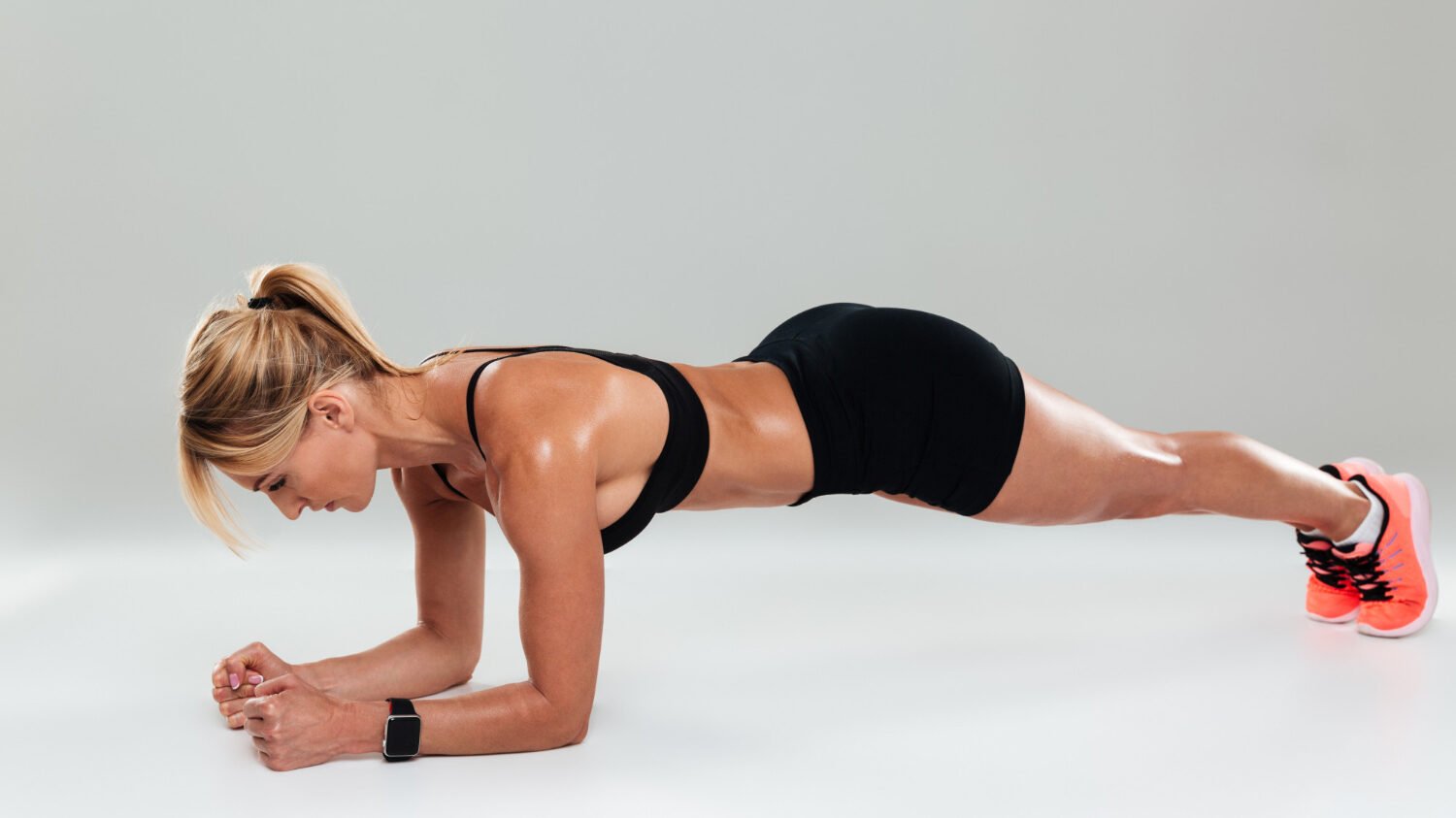
Once you’ve mastered the basic plank, there are plenty of beginner-friendly variations to keep your core engaged and challenged. Read on to discover these 10 variations and take your plank exercises to the next level!
1. Skater Stepback
Incorporate the skater stepback into your plank routine to target the obliques and hip flexors. Start in a high plank position with your hands directly under your shoulders. Then, jump both feet to the right side, bending your knees and keeping your back straight.
Next, swiftly hop back to center and repeat on the left side. This dynamic movement engages multiple muscle groups simultaneously for an intense core workout that improves agility and balance.
Engage in 3 sets of 10 skater stepbacks as part of your plank exercise routine to challenge yourself while enhancing overall body stability and strength. The skater stepback is a versatile move that not only complements traditional planking exercises but also helps improve coordination and flexibility, making it an effective addition to any beginner’s fitness regimen focusing on core development.
2. Front Plank
To transition from the Skater Stepback to the Front Plank, let’s focus on one of the most fundamental plank variations. The Front Plank is an excellent exercise for beginners, as it effectively targets and strengthens the core muscles.
To perform a proper front plank, start by positioning yourself face down with your forearms and toes supporting your body weight.
Engage your core muscles while maintaining a straight line from your head to your heels. Hold this position for at least 30 seconds or longer if you feel comfortable. As you get stronger, gradually increase the duration of your front plank to further challenge and develop your core strength.
3. Bodyweight Kneeling Push-Up Row
Transitioning from mastering the Front Plank, the Bodyweight Kneeling Push-Up Row is another effective plank variation that targets your core muscles and works on strengthening your upper body.
To perform this exercise, start in a kneeling position with your hands placed on the ground slightly wider than shoulder-width apart. Slowly lower your chest towards the ground while keeping your elbows close to your body.
As you push back up, bring one elbow up towards the ceiling, engaging your back muscles and core. Repeat on the other side and continue alternating for a set number of repetitions.
This dynamic exercise not only engages your core but also targets muscles in your back, shoulders, and arms. It helps build strength throughout these areas as well as promoting stability throughout the movement.
4. Elbow to Knee Side Plank Crunch
Transitioning from the Bodyweight Kneeling Push-Up Row, the Elbow to Knee Side Plank Crunch is an excellent exercise that targets your obliques and strengthens your core. To perform this variation, begin by getting into a side plank position with your elbow directly beneath your shoulder and your legs extended.
Next, bring your top elbow down towards your bottom knee while engaging your core muscles. Contract and hold for a moment before returning to the starting position.
Engage in 10-15 repetitions on each side to feel the burn in those oblique muscles and increase overall core strength. This dynamic movement not only challenges stability but also improves coordination while working multiple muscle groups simultaneously.
5. Front Plank with Arm and Leg Lift (push-up position)
Engage your core and get into a push-up position. Lift one arm straight in front of you and the opposite leg straight behind you, keeping your body in a straight line. Hold for a few seconds before returning to the starting position.
This exercise targets your core muscles, shoulders, and glutes while improving overall stability.
To challenge yourself further, try alternating sides or holding for longer durations as you build strength and endurance. The front plank with arm and leg lift is an effective way to take your planking routine up a notch.
6. Front Plank with Twist
Transitioning from the Front Plank with Arm and Leg Lift, another effective plank variation to integrate into your routine is the Front Plank with Twist. This dynamic move not only engages your core but also targets the obliques, further enhancing overall stability.
To execute this exercise, begin in a standard front plank position with forearms on the ground and body straight from head to heels. Engage your core muscles as you twist your hips to one side while keeping the rest of your body stable.
Return to center and then twist in the opposite direction. Ensure controlled movements throughout while maintaining proper form to maximize its effectiveness for strengthening your core and toning those oblique muscles.
7. Climber a padded stool Supported
Using a padded stool, support your hands on the edge of the seat and assume a push-up position. Keep your body straight from head to heels and engage your core muscles. Alternate bringing each knee in toward your chest while maintaining stability through your upper body.
As you perform this exercise, focus on keeping your hips level and avoiding any excessive rocking or swaying. The climber on a padded stool supported is an effective way to target the core while also engaging the upper body and improving overall stability.
8. Knee To Elbow Touch Front Plank
To perform the Knee to Elbow Touch Front Plank, start in a traditional front plank position with your forearms on the ground and elbows directly beneath your shoulders. Then, lift one foot off the ground and bring your knee towards the corresponding elbow while maintaining a stable core.
As you return your leg to the starting position, repeat the movement with the opposite side. This exercise targets not only your core muscles but also engages your obliques as you twist and reach each knee towards its respective elbow.
Engage in slow, controlled movements for maximum effectiveness. Throughout this exercise, ensure that your hips stay parallel to the ground and avoid any excessive swaying or arching of the lower back.
9. Mountain Climber
Transitioning from the Knee To Elbow Touch Front Plank, introduce the dynamic and challenging exercise of Mountain Climbers. This full-body workout targets multiple muscle groups simultaneously and elevates your heart rate for an effective calorie burn.
Start in a high plank position with your hands directly beneath your shoulders, engage your core, drive one knee towards your chest then switch to bring the other knee in, alternating back and forth at a moderate pace.
When performing Mountain Climbers, maintain proper form by keeping your hips level and spine neutral throughout the movement. By incorporating this exercise into your routine, you’ll enhance not only core strength but also cardiovascular endurance.
10. Cobra Yoga Pose
To do the Cobra yoga pose, start by lying face down with your hands under your shoulders. Press into the floor and lift your chest while keeping your pelvis grounded. Engage your back muscles as you look up gently, stretching through the front of your body.
Hold this position for a few breaths then release back to the ground.
The Cobra yoga pose is beneficial for beginners as it helps in strengthening the back muscles and improving flexibility in the spine, making it a great way to counteract long hours of sitting or hunching over a computer.
Tips and Common Mistakes for Beginners
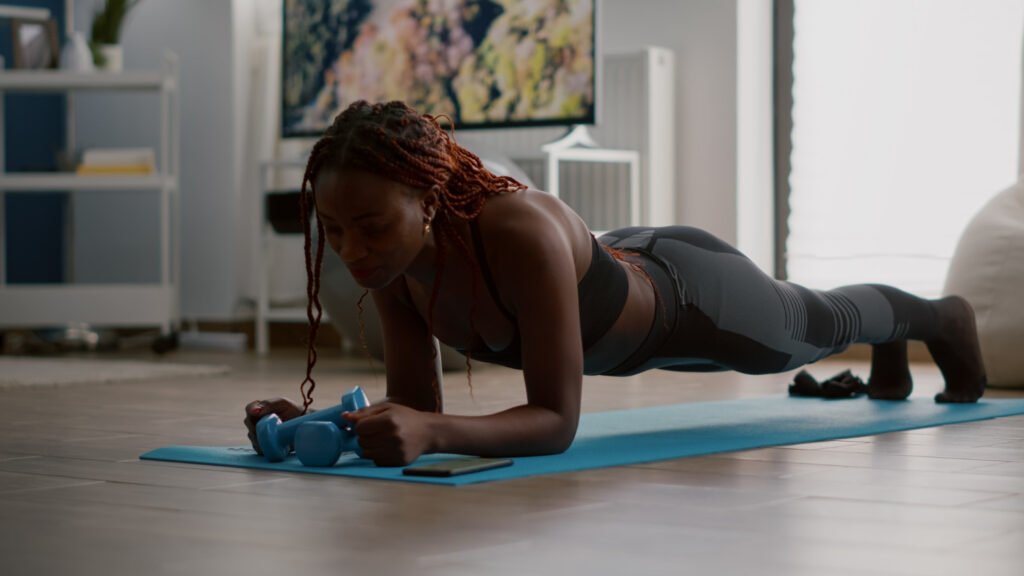
To ensure that beginners get the most out of their plank exercises, it’s important to keep your back straight, breathe deeply, and avoid letting your hips sink. Proper elbow placement and starting slow are also key for mastering plank exercises.
For more detailed tips and common mistakes to look out for as a beginner, continue reading the full blog post.
Keep your back straight
Engage your core muscles and keep your back straight during planks to maintain proper form. This helps prevent straining your lower back and promotes overall stability. Remember to align your body from head to heels, creating a straight line throughout the exercise.
By keeping your back straight, you effectively target and strengthen the core muscles while avoiding unnecessary strain on the spine. Maintaining this alignment also aids in developing better posture and reduces the risk of injury during plank exercises for beginners.
Breathe deeply
– Keep your back straight, and now it’s time to focus on another crucial aspect of mastering plank exercises for beginners: breathing deeply. Proper breathing during planks is essential for maintaining stability and preventing dizziness.
As you hold the plank position, inhale deeply through your nose, filling your lungs with air while keeping your core engaged. Exhale slowly through your mouth, releasing the air as you maintain a steady posture.
– To maximize the benefits of the plank exercises for beginners and promote relaxation, concentrate on taking slow, controlled breaths. Avoid shallow breathing or holding your breath which can lead to tension in the body.
Don’t let your hips sink
Maintain a straight line from your head to your heels. Engage your core muscles and avoid arching or sagging your lower back. Proper alignment is crucial to prevent strain on your lower back and ensure you are effectively targeting the muscles you intend to work.
Keep a watchful eye on the position of your hips. Concentrate on keeping them in line with the rest of your body. This will help distribute the workload evenly across all the muscles involved, leading to better results and reducing the risk of injury during plank exercises for beginners.
Proper elbow placement
Position your elbows directly beneath your shoulders to maintain proper alignment throughout the plank. Engage your core and keep your body in a straight line from head to heels. Avoid locking or hyperextending your elbows, as this can cause strain on the joints.
Ensure that your weight is evenly distributed between both forearms, and don’t allow your elbows to splay outwards. This will help you achieve optimal stability and effectiveness in strengthening your core muscles.
Maintain a neutral wrist position with fingers spread for better support during the exercise. Focus on breathing deeply and steadily as you hold the plank position, allowing yourself to gradually increase time spent in this beneficial workout for beginners.
Start slow and gradually increase time/reps
Begin with holding a plank for 20-30 seconds and increase duration as you gain strength. Listen to your body and avoid pushing too hard, which could lead to injury. Aim to add 5-10 seconds each time before trying more challenging variations.
As you build endurance, gradually increase the number of sets and repetitions. By pacing yourself, you can steadily progress towards holding planks for longer durations and mastering advanced variations.
Now let’s dive into the 10 beginner-friendly plank exercises that will help strengthen your core muscles even further.
Conclusion
In conclusion, mastering plank exercises for beginners is key to strengthening your core. By incorporating the 10 beginner-friendly plank variations and following the tips provided, you can easily build core strength and stability while avoiding common mistakes.
Have you tried these exercises yet? Challenge yourself to implement them into your workout routine and feel the difference in your core strength. The impact of consistent practice can lead to significant improvements in overall fitness and well-being.
Grab a yoga mat and get started on your journey to a stronger core today!
FAQs
1. What is a plank exercise for beginners?
A plank exercise for beginners is an easy core workout where you hold your body straight like a board using your forearms and toes.
2. How do I start doing planks as a beginner?
To start, lie face down, push up onto your palms or elbows, keep your back flat and hold the pose without letting your hips sag.
3. Can planking exercises help me with low back pain?
Yes, performing basic plank exercises can strengthen core muscles which might help reduce low back pain by supporting the lower spine.
4. How often should I do these exercises to see results?
Beginners should aim to include plank exercises in their routine several times a week to build strength and work towards weight loss goals.
5. Are there variations of the plank exercise that I can try out?
Absolutely! Once you master the basic form, challenge yourself with variations like side planks or incorporating movements like leg lifts to target more muscles.
6. Do I need any special equipment for these plank workouts?
Nope! You can perform these planking exercises on any flat surface; just ensure you have enough space and it’s comfortable for pressing up into poses.

Author
Years ago, the spark of my life’s passion ignited in my mind the moment I stepped into the local gym for the first time. The inaugural bead of perspiration, the initial endeavor, the very first surge of endorphins, and a sense of pride that washed over me post-workout marked the beginning of my deep-seated interest in strength sports, fitness, and sports nutrition. This very curiosity blossomed rapidly into a profound fascination, propelling me to earn a Master’s degree in Physical Education from the Academy of Physical Education in Krakow, followed by a Sports Manager diploma from the Jagiellonian University. My journey of growth led me to gain more specialized qualifications, such as being a certified personal trainer with a focus on sports dietetics, a lifeguard, and an instructor for wellness and corrective gymnastics. Theoretical knowledge paired seamlessly with practical experience, reinforcing my belief that the transformation of individuals under my guidance was also a reflection of my personal growth. This belief holds true even today. Each day, I strive to push the boundaries and explore new realms. These realms gently elevate me to greater heights. The unique combination of passion for my field and the continuous quest for growth fuels my drive to break new ground.

